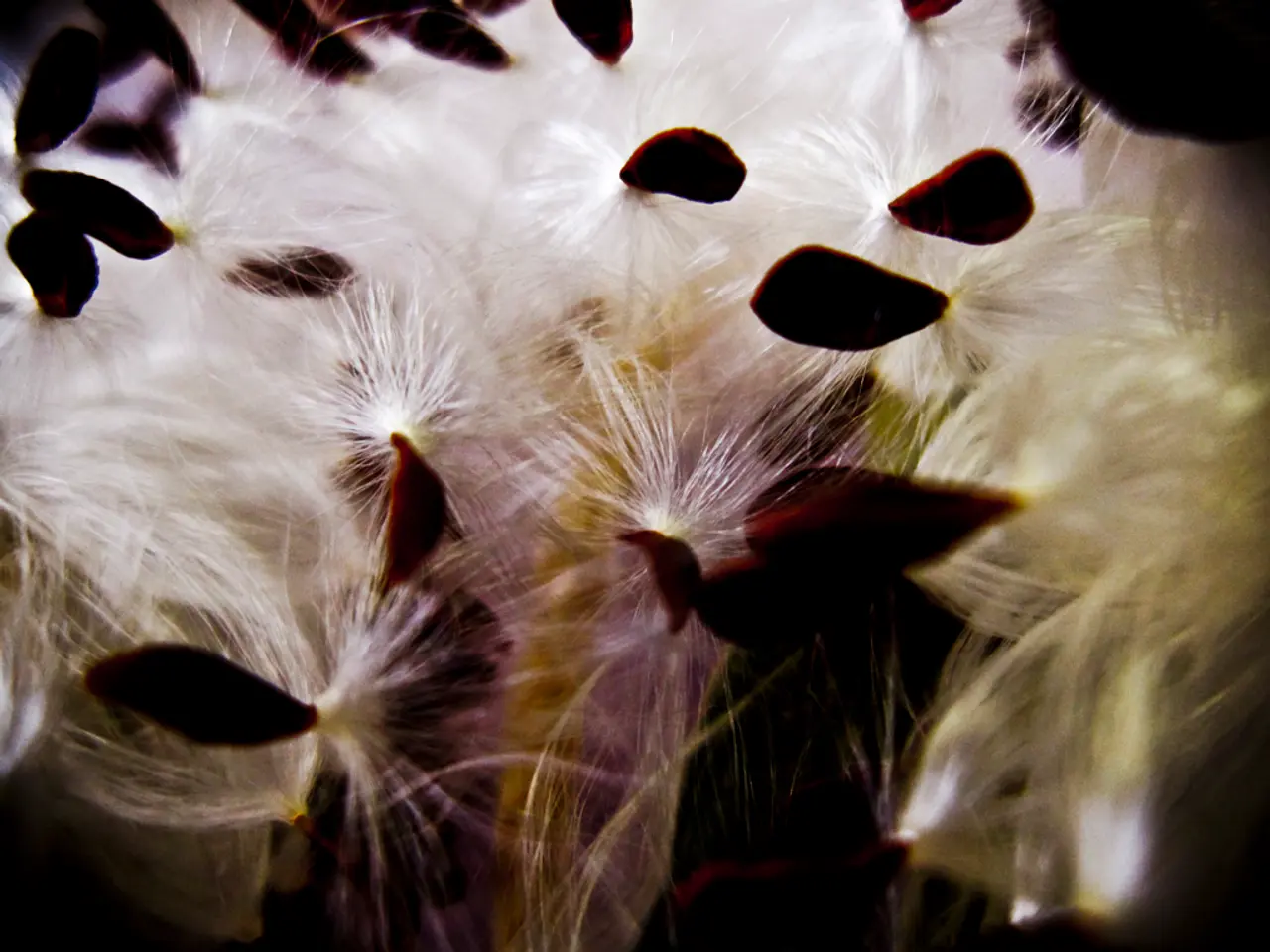Guide for Preserving Seeds from Your Garden for Regrowth Next Year - Crucial Facts You Should Be Aware Of
In the world of gardening, seed storage is a crucial aspect that ensures the longevity of your seeds and the success of your future plantings. Here's a step-by-step guide to help you store seeds properly for long-term viability.
First, it's essential to clean and dry your seeds thoroughly after harvest. Remove pulp, chaff, or debris, and let them dry for several days until they are fully dry and hard to the touch.
Next, store your seeds in labeled, airtight containers such as mason jars, plastic bags, or vacuum-sealed pouches. These containers will protect your seeds from moisture and air exposure, key factors in seed deterioration.
Ideally, your seeds should be kept at temperatures between 32°F (0°C) and 40°F (4°C), in a low-humidity environment such as a refrigerator or cool basement. Avoid storing seeds in garages, attics, or other places with variable temperature and humidity.
To further protect your seeds from moisture, consider using desiccants like silica gel packets inside your storage containers. These packets can help absorb residual moisture and inhibit mold growth.
Remember to avoid exposure to sunlight, heat, and moisture fluctuations to maximize seed longevity and prevent mold development.
Following these practices helps maintain the internal seed structure and germination ability for multiple years, depending on the seed type. Some common home garden crops like basil, broccoli, cabbage, cucumbers, eggplant, lettuce, oregano, pumpkin, radish, squash, tomato, and watermelon seeds can be stored for up to 4-5 years and still remain viable.
When harvesting garden seeds, select the healthiest fruit from the most robust plant. Allow the fruit to ripen fully before harvesting, which may be 2-4 weeks past peak harvest time. Cross-pollinated plants are not recommended for seed saving.
To test seed germination, seeds can be placed on a moistened paper towel and kept in a warm area around 70 F (21 C) for a week to 10 days. If they don't grow, the seeds may be expired.
Open pollinated, heirloom, and self-pollinating plants are best for seed saving as they produce seeds that are true to type. The benefits of seed saving include cost savings, experimental excitement, sustainable practices, preservation of heirloom cultivars, and supporting local gardening.
For seed packet storage, a cute, powder-coated metal box or a plastic seed packet storage box can be a durable and space-saving solution. Rechargeable silica gel packets can be found on Amazon to help maintain a dry environment for your seeds.
In conclusion, proper seed storage is vital for maintaining seed viability. By following the guidelines outlined above, you can ensure that your seeds remain viable for multiple years, saving you money and providing you with the opportunity to experiment with different plant varieties.
This article was written by Amy Grant, a professional chef and gardener with 30 years of experience.
Maintaining a healthy lifestyle and home-and-garden practices are often intertwined, with seed storage being an essential part of gardening. Properly storing seeds, such as basil, broccoli, cabbage, cucumbers, eggplant, lettuce, oregano, pumpkin, radish, squash, tomato, and watermelon, in labeled, airtight containers in a low-humidity, cool environment can help them remain viable for up to 4-5 years.




